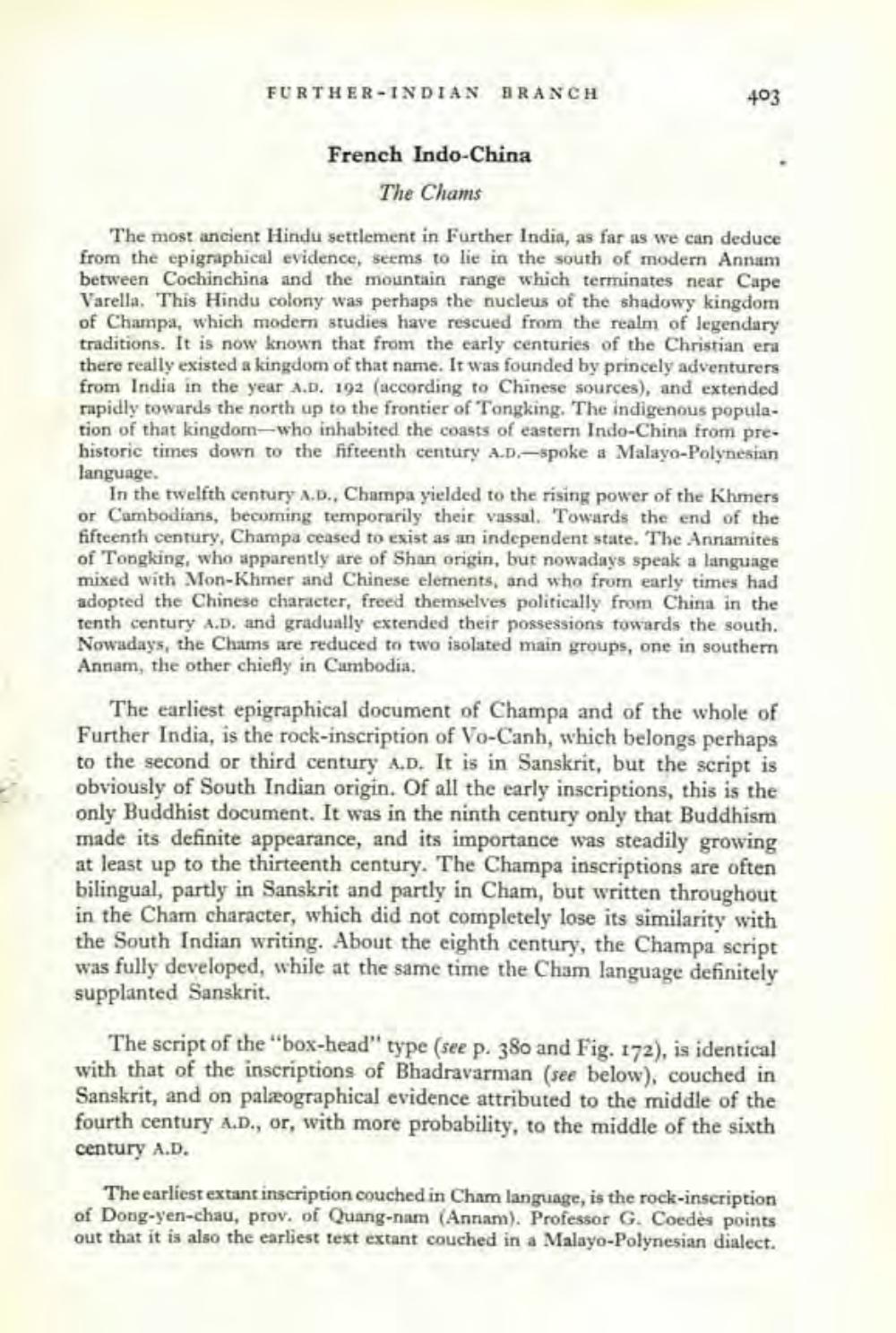________________
FURTHER-INDIAN
BRANCH
French Indo-China The Chams
403
The most ancient Hindu settlement in Further India, as far as we can deduce from the epigraphical evidence, seems to lie in the south of modern Annam between Cochinchina and the mountain range which terminates near Cape Varella. This Hindu colony was perhaps the nucleus of the shadowy kingdom of Champa, which modern studies have rescued from the realm of legendary traditions. It is now known that from the early centuries of the Christian era there really existed a kingdom of that name. It was founded by princely adventurers from India in the year A.D. 192 (according to Chinese sources), and extended rapidly towards the north up to the frontier of Tongking. The indigenous population of that kingdom-who inhabited the coasts of eastern Indo-China from prehistoric times down to the fifteenth century A.D.-spoke a Malayo-Polynesian language.
In the twelfth century A.D., Champa yielded to the rising power of the Khmers or Cambodians, becoming temporarily their vassal. Towards the end of the fifteenth century, Champa ceased to exist as an independent state. The Annamites of Tongking, who apparently are of Shan origin, but nowadays speak a language mixed with Mon-Khmer and Chinese elements, and who from early times had adopted the Chinese character, freed themselves politically from China in the tenth century A.D. and gradually extended their possessions towards the south. Nowadays, the Chams are reduced to two isolated main groups, one in southern Annam, the other chiefly in Cambodia.
The earliest epigraphical document of Champa and of the whole of Further India, is the rock-inscription of Vo-Canh, which belongs perhaps to the second or third century A.D. It is in Sanskrit, but the script is obviously of South Indian origin. Of all the early inscriptions, this is the only Buddhist document. It was in the ninth century only that Buddhism made its definite appearance, and its importance was steadily growing at least up to the thirteenth century. The Champa inscriptions are often bilingual, partly in Sanskrit and partly in Cham, but written throughout in the Cham character, which did not completely lose its similarity with the South Indian writing. About the eighth century, the Champa script was fully developed, while at the same time the Cham language definitely supplanted Sanskrit.
The script of the "box-head" type (see p. 380 and Fig. 172), is identical with that of the inscriptions of Bhadravarman (see below), couched in Sanskrit, and on palæographical evidence attributed to the middle of the fourth century A.D., or, with more probability, to the middle of the sixth century A.D.
The earliest extant inscription couched in Cham language, is the rock-inscription of Dong-yen-chau, prov. of Quang-nam (Annam). Professor G. Coedès points out that it is also the earliest text extant couched in a Malayo-Polynesian dialect.




